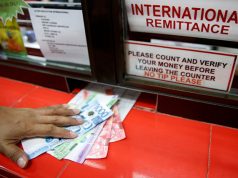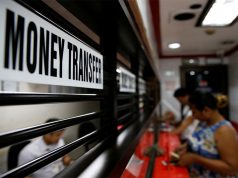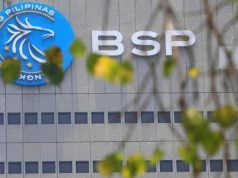MANILA/HONG KONG – The Philippines has drawn kudos and inflows as one of Asia’s fastest growing economies, but some economic indicators raise a question of whether it could be a soft spot if US interest rate hikes spur capital outflows from Asia this year.
The last episode of major outflows, triggered by the US Federal Reserve’s 2013 announcement that it would reduce monetary stimulus – an event dubbed the “taper tantrum” – saw markets zeroing in on India and Indonesia because of their external imbalances then.
While these imbalances still exist, they are much narrower and the central banks of the two countries have accumulated foreign exchange reserves. That should make them better able to cope with an episode of global outflows than in 2013-14, when both temporarily raised interest rates to keep investors interested.
But in some ways, the Philippines – which reported 6.7 percent economic growth for 2017 – may seem more vulnerable to outflows than five years ago.
It hasn’t been accumulating reserves since 2012 and President Rodrigo Duterte’s ambition to upgrade the country’s outdated infrastructure has depleted its other main line of defense, the current account surplus.
“The vulnerability for Philippines is that the current account positioning is deteriorating,” said Sanjay Mathur, chief economist for Southeast Asia and India at ANZ.
The central bank projects there was a current account deficit last year – the first since 2002 – of $100 million, and it forecasts one of $700 million this year.
BID TO ALLAY CONCERN
Governor Nestor Espenilla of the central bank has repeatedly sought to allay concerns about the deficit, attributing it to rapid economic growth backed by rising investments.
Rajiv Biswas, Asia Pacific chief economist for IHS Markit, isn’t worried by gaps in the current account, saying “it’s not a chronic problem, it’s still a relatively moderate deficit.”
The account is backstopped by large foreign worker remittances. In the first 11 months of 2017, these were $25.3 billion, up 4.0 percent from a year earlier. Also up in 2017 was foreign direct investment; January-October saw $7.86 billion versus $6.52 billion one year earlier.
Philippine foreign-exchange reserves, unlike those of Indonesia and India, haven’t been rising. At the end of December, they were $81.57 billion, compared with $83.83 billion five years earlier.
Between Jan. 29 and the Feb. 6 Asia stock sell-off, Philippine shares fell 7.7 percent peak-to-trough, as much as India’s but twice as much as Indonesian and Malaysian stocks.
The peso has been the weakest Asian currency against the dollar so far this year, shedding nearly 2.5 percent.
Espenilla, the central bank governor, has said the Philippines was “very far from any foreign exchange crisis” and the currency is supported by healthy economic fundamentals.
Inflation is another number drawing attention, after hitting 4.0 percent – its highest since October 2014 – in January.
Only three out of 12 analysts in a Reuters Poll think the Philippines will raise its key rate on Thursday, but the central bank is seen edging closer to a its first hike since 2014.
If the Fed steps up its pace of US rate hikes, the Philippines and other emerging Asian economies will need to raise theirs to fend off capital outflows, economists say.
Biswas of IHS Markit says the Philippines is “somewhat more vulnerable to capital outflows now but India and Indonesia are still top of the list.”







